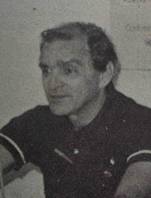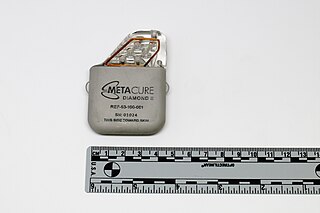 W
WSteven G Arless is a Canadian entrepreneur in the biomedical technology industry. He directed and developed several medical device companies treating cardiovascular disease from inception trough major financing and public stock offering, advancing new medical devices from R&D to commercialization and global sales, including CryoCath Technologies, CardioInsight and Resonant Medical. He has served as CEO for a number of companies, most notably CryoCath Technologies, Resonant Medical, and CardioInsight.
 W
WBlood fractionation is the process of fractionating whole blood, or separating it into its component parts. This is typically done by centrifuging the blood.
 W
WElsimar Metzker Coutinho was a Brazilian scientist of Luso-Austrian descent, professor, gynecologist, television personality, and character named as "Prince of Itapoa", in the books of Jorge Amado which references the Coutinho family's land in Itapoa where Amado himself lived.
 W
WEssure was a device for female sterilization. It is a metal coil which when placed into each fallopian tube induces fibrosis and blockage. Essure was designed as an alternative to tubal ligation. Although designed to remain in place for a lifetime, it was approved based on short-term safety studies. Of the 745 women with implants in the original premarket studies, 92% were followed up at one year, and 25% for two years, for safety outcomes. A 2009 review concluded that Essure appeared safe and effective based on short-term studies, that it was less invasive and could be cheaper than laparoscopic bilateral tubal ligation. About 750,000 women have received the device.
 W
WGastric electrical stimulation, also known as implantable gastric stimulation, is the use of specific devices to provide electrical stimulation to the stomach to try to bring about weight loss in those who are overweight or improve gastroparesis.
 W
WThe International Space Station Environmental Control and Life Support System (ECLSS) is a life support system that provides or controls atmospheric pressure, fire detection and suppression, oxygen levels, waste management and water supply. The highest priority for the ECLSS is the ISS atmosphere, but the system also collects, processes, and stores waste and water produced and used by the crew—a process that recycles fluid from the sink, shower, toilet, and condensation from the air. The Elektron system aboard Zvezda and a similar system in Destiny generate oxygen aboard the station. The crew has a backup option in the form of bottled oxygen and Solid Fuel Oxygen Generation (SFOG) canisters. Carbon dioxide is removed from the air by the Russian Vozdukh system in Zvezda, one Carbon Dioxide Removal Assembly (CDRA) located in the U.S. Lab module, and one CDRA in the U.S. Node 3 module. Other by-products of human metabolism, such as methane from flatulence and ammonia from sweat, are removed by activated charcoal filters or by the Trace Contaminant Control System (TCCS).
 W
WIntelligent laser speckle classification, or ILSC, is a scanning method used to discriminate between various micro-textural structures, such as the cellular components in human skin. or discriminates sub-surface characteristics of any material
 W
WZion Tse is the Professor and Chair in Medical Robotics at the University of York. Before that, Tse was an Associate Professor in the School of Electrical and Computer Engineering and the Director of the Medical Robotics Lab at the University of Georgia, a visiting scientist at the National Institutes of Health and a research fellow at Harvard University. His PhD degree in Mechatronics in Medicine was received from Imperial College London in the UK. Most of his professional experience has been in medical Mechatronics, Robot-assisted surgery, Medical imaging, and Image-guided radiation therapy. Tse has developed a broad range of medical robots and clinical devices, most of which have been tested in clinical patient trials. Tse has published a number of internationally circulated journal papers, articles at international conferences, and robotic and mechatronic patents.
 W
WVeronica Bucket is a mechanism for hand washing originating in Ghana which consists of a bucket of water with a tap fixed at the bottom, mounted at hand height, and a bowl at the bottom to collect waste water. The Veronica bucket was developed by Veronica Bekoe. The Veronica bucket serves as a simple way to encourage proper hand washing using flowing water. Bekoe in an interview stated that the bucket was originally made to help her and her colleagues wash their hands under running water after each lab session. She said, "We are used to washing hands in a bowl with others washing in the same water, which will do more harm than good." These colleagues were contaminating their hands rather than decontaminating them. In addition to the Covid benefit of hand washing, Veronica Bucket is also essential for areas where potable water is not readily available.